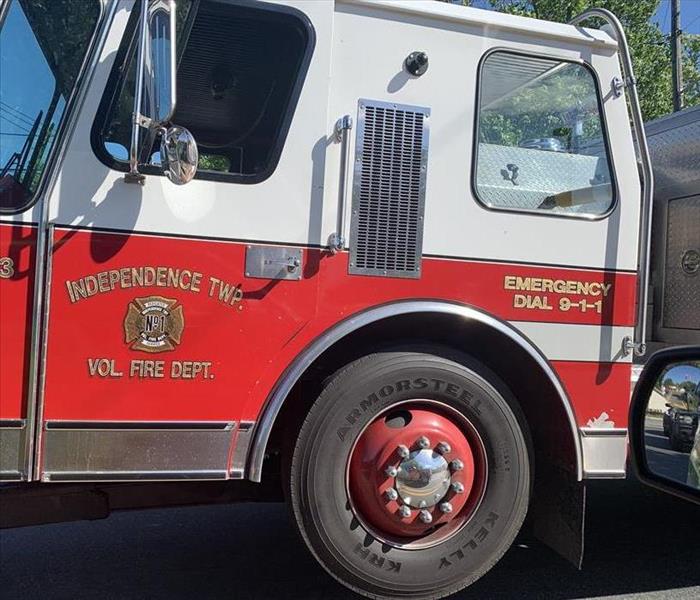What Information Is Good To Have When Planning To Restore Fire-Damaged Upholstery?
8/15/2020 (Permalink)
SERVPRO Helps Whenever Unique Fire Damage Restoration Needs Arise in Randolph Properties
As a fire ravages your property, upholstery items are among the most vulnerable valuables likely to sustain significant damages. If the damages are salvageable, you need to know the right steps to take to restore the items to their preloss state. SERVPRO offers professional restoration of damaged upholstery in Randolph homes.
What ruins upholstery items during home fires?
Fire damage restoration in Randolph properties can run smoother when you understand some crucial details, such as how various damages develop. Over the years, our SERVPRO technicians have identified some common sources of damages in upholstery items, including:
- Exposure of items to heat or flames
- Splashing of water or firefighting chemicals on the items
- Soot and other residues accumulating on item surfaces
- Dyes running leading to stains
Damage from heat or flames is more likely to be permanent since it changes the physical attributes of the affected material. For instance, deep charring, melting, shrinking, or dripping are some of the irreversible changes that can happen when extreme heat interacts with upholstery materials.
Other problems such as soot deposit, dyes running and interaction with firefighting chemicals may be reversed depending on the extent of damage, or the type of response mounted. Our SERVPRO technicians can help with most of the issues since they receive advanced training and IICRC certification in upholstery and fabric cleaning.
How easy is it to restore salvageable upholstery items to preloss state?
Restoration may involve cleaning, resurfacing, or other processes. If the only issue you identify is soiling, cleaning can help restore them to the preloss state. The main factors that influence the steps you need to take include:
- The level of soiling
- Kind of fiber that makes up the fabric
- Type of fabric weave
As the smoke spreads around a property, soot and other residues accumulate on the surfaces of upholstery items. Some of the residues also penetrate beyond the surface of the material, thus increasing the level of soiling. Soils can also vary in physical traits and may be classified as dry, wet, or even oily, depending on the properties they exhibit.
What determines the level of soiling on upholstery items after a fire?
- Types of materials the fire burns
- The intensity of the fire
- The procedures used to quell the fire
Some of the byproducts of a fire, including soot and smoke, are generated by incomplete combustion of materials. Therefore, fires that burn less intensely are likely to leave your items with heavier soiling. Such fires are also responsible for wet smoke, complicating the soiling further.
Soiling can also depend on the type of materials affected by the fire. Natural materials like wood burn easily, leaving minimal residues. Such materials also produce dry smoke that settles on surfaces, which, unlike wet smoke, is easier to remove using mechanical procedures such as wiping or vacuuming the affected surface.
How does the type of fabric weave affect the cleaning process?
There are several categories of woven fabrics used in upholstery items, including:
- Basket weave
- Plain weave
- Satin weave
- Twill weave
- Pile weave
Our SERVPRO technicians identify the type of weave before starting cleaning procedures. Some categories, such as plain, twill, and basket weaves, can withstand aggressive cleaning procedures during restoration without sustaining damages. A satin weave, on the other hand, has low abrasion resistance and strength, thus requiring gentler cleaning approaches.
Another issue with fabrics is the changes that cleaning procedures might introduce. Some fabrics are prone to shrinking, cellulose browning and color bleeding, among other issues. Such problems can worsen the damage from the fire or create new problems.
How does SERVPRO overcome the challenges when cleaning upholstery?
Our technicians are highly trained in handling upholstery items. One area covered by such training is proper testing of the materials we intend to restore. Performing tests on small patches of the material before we embark on cleaning, or other restorative steps, helps us confirm whether issues such as dyes bleeding, shrinking, or browning are likely to occur.
We have specialized upholstery-cleaning machines that help fine-tune the cleaning process by regulating the application of cleaning agents, the amount of heat used and ensure thorough rinsing. We also regulate the drying process to prevent problems that can develop due to extended exposure to moisture. Placing the items in a well-ventilated area or using air movers to improve the drying process eliminates problems like browning.
Saving your precious upholstery items after a fire has several advantages. SERVPRO of Southwest Morris County can help you in many ways to achieve this objective. Call us at (973) 895-5000. We're Faster To Any Size Disaster.






 24/7 Emergency Service
24/7 Emergency Service
